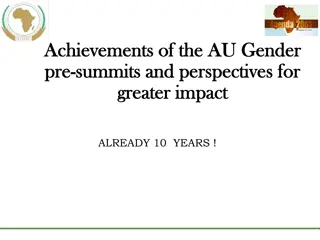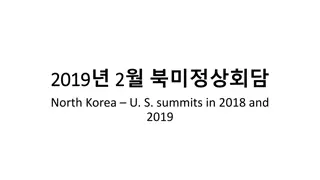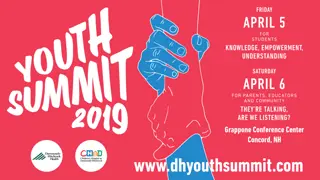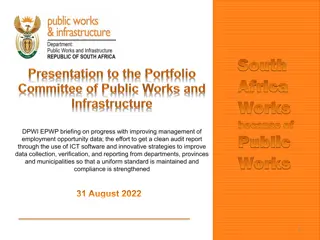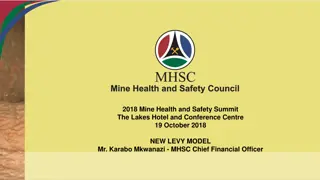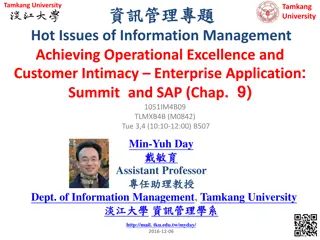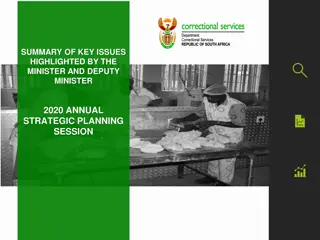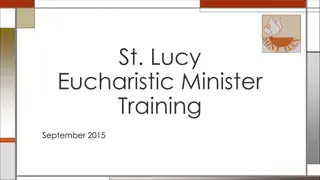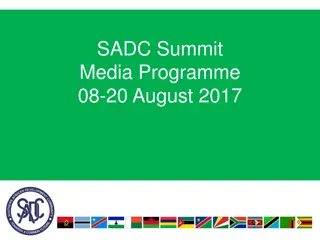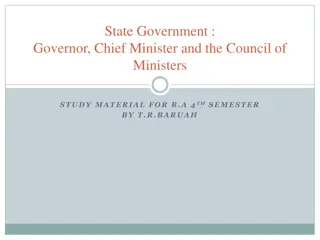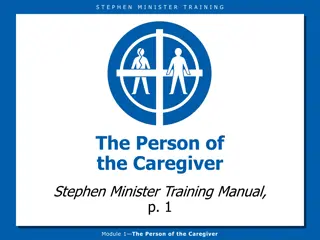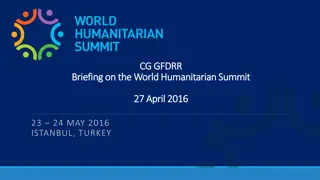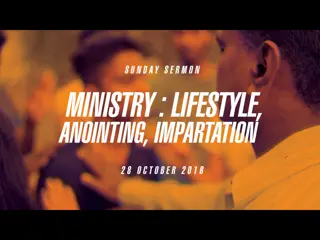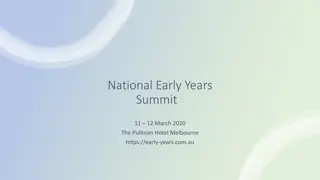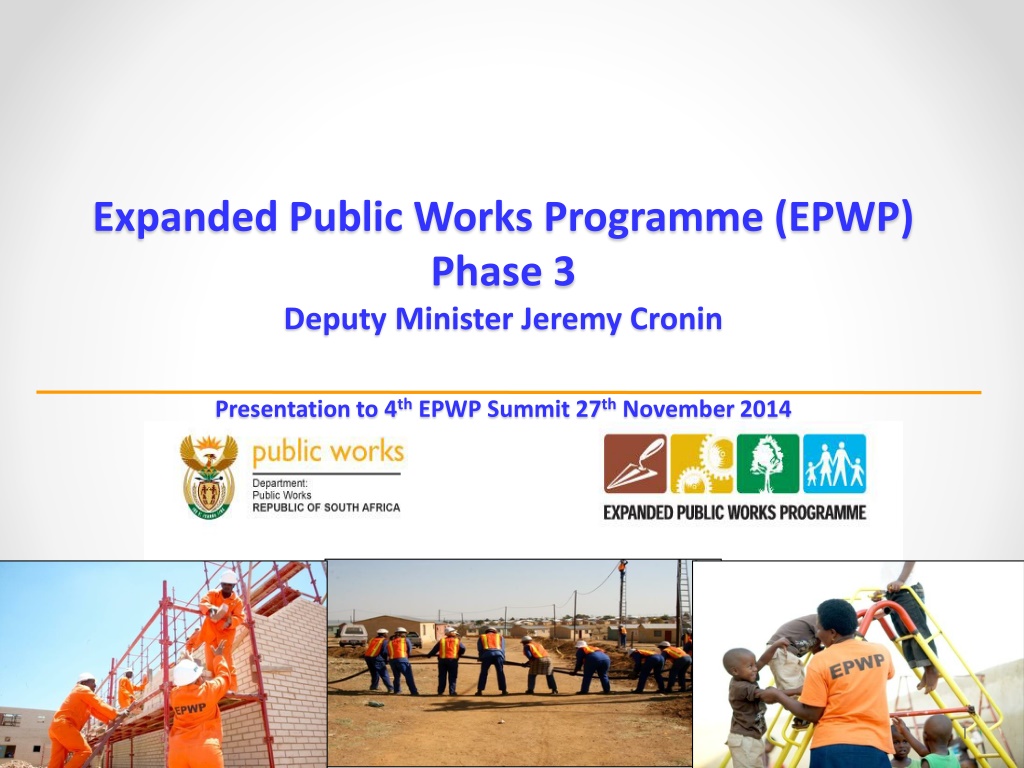
South Africa's Innovative Public Works Programmes
Discover the evolution of South Africa's Expanded Public Works Programme (EPWP) through Phases 1 and 2, showcasing government efforts to address unemployment and economic challenges, along with pioneering environmental projects. Learn about the country's global recognition as an innovator in Public Employment Programmes (PEPs) and the significant impact on the economy.
Download Presentation

Please find below an Image/Link to download the presentation.
The content on the website is provided AS IS for your information and personal use only. It may not be sold, licensed, or shared on other websites without obtaining consent from the author. If you encounter any issues during the download, it is possible that the publisher has removed the file from their server.
You are allowed to download the files provided on this website for personal or commercial use, subject to the condition that they are used lawfully. All files are the property of their respective owners.
The content on the website is provided AS IS for your information and personal use only. It may not be sold, licensed, or shared on other websites without obtaining consent from the author.
E N D
Presentation Transcript
Expanded Public Works Programme (EPWP) Phase 3 Deputy Minister Jeremy Cronin Presentation to 4thEPWP Summit 27thNovember 2014 1
EPWP Phase 1 (2004-2009) In late 1990s and early 2000s economic growth, but persisting crisis levels of unemployment. In this context, following the 2003 Growth and Development Summit, Government agreed on a massification of the public works programme EPWP phase 1 with a 5-year target of 1 million work opportunities. The key assumption (at the time) was economic growth in the firsteconomy was not impacting upon the secondeconomy hence the need for targeted developmental programmes (SMME Development, Taxi Recapitalization Project and EPWP) as once-off ladders to graduate secondeconomy activities into formal economy . Phase 1 achieved its 1 million work opportunities target one-year ahead (2008) of schedule but unemployment remained stubbornly high, and worsened from 2008 with onset of global economic crisis. 3
EPWP Phase 2 (2009-2014) Encouraged by success of massification in Phase 1 (1 million work opportunities in 4 years), and responding to local job-loss crisis linked to global economic crisis Phase 2 set an ambitious 4,5 million work opportunities target. By end of March 2014 we had achieved 4,3 m work opportunities. Phase 2 has also seen new developments including: introduction of the Non-State sector, which has two programmes, namely Community Work Programme and Non- Profit Organisation programme, and the National, Provincial and Municipal EPWP Incentive. Government s New Growth Path policy (2010) clearly broke with first and second economy paradigm it s the MAINSTREAM economy that has systemic challenges. 4
South Africa a Global Innovator in PEPs With chronic unemployment, even in many developed economies, the scale and innovative achievements of SA s PEPs have attracted international interest. However, we have not sufficiently communicated these achievements at home! Uniquely, our PEPs cut across several sectors. They are championed through different line departments, provinces and municipalities and they have both a rural and urban focus. Labour intensive methods are mainstreamed into Government infrastructure contracting rather than having PEPs operating in separate silos. 5
South Africa a Global Innovator in PEPs continued SA has been a global pioneer in applying PEPs on scale to environmental services Working for Water (WfW), Working on Fire, Working for Wetlands, People & Parks The WfW has cleared over 2 million hectares of alien invasive plants, and prevented loss of 71% of grazing. Also connected to Eco-Furniture Programme using wood from alien invasives 500,000 school desks for disadvantaged schools by end of 14/15 financial year Working on Fire in 2007/2008 saved the forestry industry alone R3,7 billion on a budget of R123 million. HUGE CONTRIBUTION TO OUR GDP BUT NOT CALCULATED IN GDP 6
Lesson 1: Clarify Key Objective of a Particular Programme The Trilemma of PEPs Sustainable household livelihoods For different programmes, sectors and contexts optimal balance between these 3 will vary PEP s development potential lies in providing all three of these outcomes- but there are trade- offs between them in practice Provision of Assets & Services Skills Development & Graduation Increasing one output is likely to result in decreases in the others 8
Different strengths of different programmes Working on Fire skilled work and training, relatively long term involvement, excellent graduation prospects but low numbers (5000 fire-fighters p.a.) Community Work Programme less training but possibilities to scale-up rapidly to over 1m w/o s p.a. contributes to local community cohesion and ownership 9
Key Lessons from EPWP Phases 1 & 2 continued Lesson 2: Achieve better balance between work opportunity headcountsand other outcomes Work opportunity targets are very important but we need to balance these with other indicators, including: Full-time equivalents Evaluation of post-participation outcomes for participants Evaluation of assets and services produced Impact on communities This will require refining our Monitoring and Evaluation (M&E) capacities 10
Sustainable livelihoods/A social or solidarity economy? Siyakholwa forging a different countryside Siyakholwa Foundation formed 2007 as an NPO. Based in old saw-mill in Qobaqoba, Keiskammahoek. After trials-and-errors in fostering coops, linked up with government s CWP. Now 1,500 participants on stipends working in 37 surrounding villages. Each village has a Village Committee rotating participants and collectively identifying public work in village - home-based care; food gardens supplying free school feeding; maintenance of public facilities in the village (school buildings, the grave-yard, etc.). Siyakholwa acts as a local implementing agent for the programme, operating in renovated sheds of the old saw-mill. The centre provides training and resourcing for the village food-gardens (soil conservation, composting, seeds); and other skills training including welding, basic auto-repairs, bee-keeping, and computer literacy. One of the aims is to train two basic handy-men for all 37 villages. 11
A co-op in eThekwini metro Metro s EPWP programme coordinated by Infrastructure & Socio-Economic Dvpt Dept I&SE Dept works closely with over 2000 co-ops in metro One eg: A food garden in Umgeni Valley. 3 pensioners were founders, now have additional coop workers paid in kind and topped up with cash contribution from pensioners grants!! Feeds local school, creche and distressed households 3 yrs ago Metro used local EPWP to repair access road culvert, water pipes, water tanks Now, because of proven durability EPWP team building large aqua-culture pond. Metro will provide tilapia, monitor water quality, and provide training 15
Building sustainable livelihoods A Social/Solidarity Economy These 2 examples demonstrate that a successful PEP isn t necessarily about graduation into the formal sector market Some successful projects don t shift people out of their villages, or townships, but rather provide a relative de- linking from an often dysfunctional labour market This can be achieved by working WITH the survival strategies of poor communities (co-ops, stokvels) and by combining a variety of features (even social grants as a top- up circulating productively within a community rather than going straight out into the pockets of the monopoly finance and retail sector.) 16
What is a social economy? The social economy comprises economic activities that are neither run by the state nor by the for-profit private sector. It includes co-ops, burial societies, voluntary and community organizations, community and union investment vehicles, stokvels and community trusts. While they should have positive net returns or break even, their main aim is to meet members needs by providing employment, access to savings or goods and services. Their surpluses are used largely for social, environmental and community goals. (Government s New Growth Path document) 17
The potential of a social economy (NGP) Employment at relatively low cost, high rates of profit are not required, and activities comparatively labour intensive; Establishing systems for collective ownership of assets, leading to more equitable ownership overall; Supporting social cohesion crucial for long-term development Meeting the basic needs of poor households ; Providing market services for small and micro-enterprises through micro-credit associations and marketing co-ops However, a social economy is not a substitute for transforming the mainstream productive economy 18
Key Lessons from EPWP Phases 1 & 2 continued Lesson 3: Challenges with Infrastructure PEPs Short-term nature of many infrastructure construction projects Average work opportunity duration in infrastructure construction and maintenance EPWPs = 65 Days. Need to place greater emphasis on infrastructure MAINTENANCE ongoing, local work - Road maintenance programmes like Zibambele and Siyatentela have an average work opportunity duration of 108 days. Reluctance of private construction sector to use labour intensive approaches Engage with sector Ensure training of professionals in labour intensive approaches Stipulate labour intensive methods more effectively in public sector contracts 19
Key Lessons from EPWP Phases 1 & 2 continued Lesson 4: Mitigate risk of projects being captured for patronage purposes There are community accusations that the selection of EPWP participants is hijacked by politicians for patronage purposes Can undermine key developmental outcome forging of community cohesion through collective productive work Community co-ownership, including community oversight of PEP projects, is the key to averting the risk of clientelism/patronage The role of community based organisations and other NPOs is proving useful in this regard, in both the CWP and in the EPWP NGO sector 20
Key Lessons building a different relationship between the state and communities Lesson 5: The need to break away from an excessive top-down service delivery model of government providing to passive/ angry citizens. Photo: CWP participants and SAPS members working together to identify crime hot-spots in Kagiso township, Mogale City, West Rand to develop a joint programme of action 21
Key Lessons from EPWP Phases 1 & 2 continued Lesson 8: The need for much greater co-ordination The scale, diversity and innovative nature of SA s PEP programmes = a major achievement but also a challenge: More work needs to be done in relation to common branding Poorly coordinated public communication on achievements across PEP programmes; insufficient sharing of lessons across programmes; and insufficient co-ordination between PEPs and other potentially related Government policies, strategies and initiatives adult education and training; SMME and Co-ops development; sustainable livelihoods; and food security programmes, etc. This is the key lesson from the past 10 years, and prime reason for the recent Cabinet decision to establish a Presidentially Coordinated IMC for PEPs. First meeting scheduled for next week. 22
We hope to take the lessons and decisions of this EPWP Summit into next week s IMC !! 23 23



